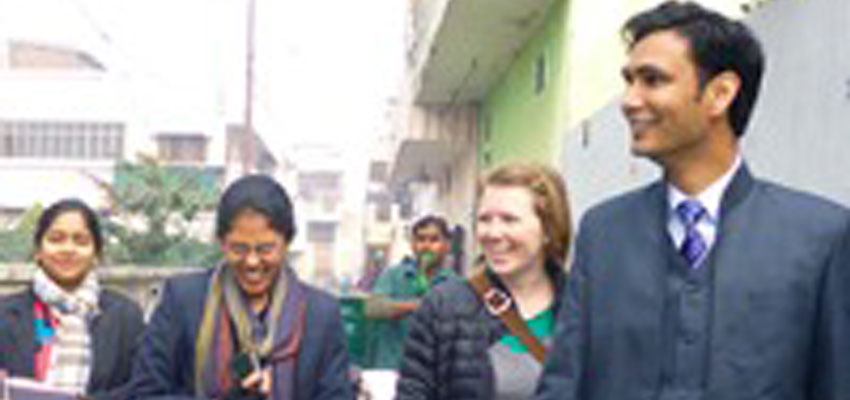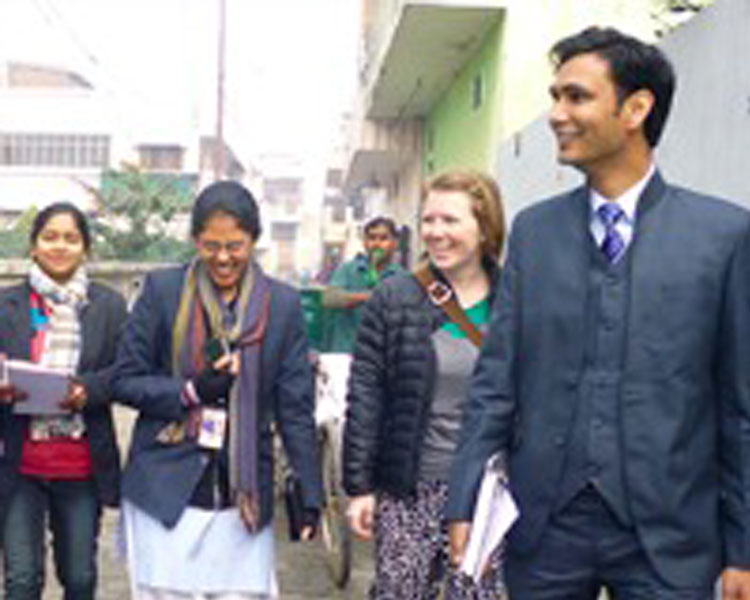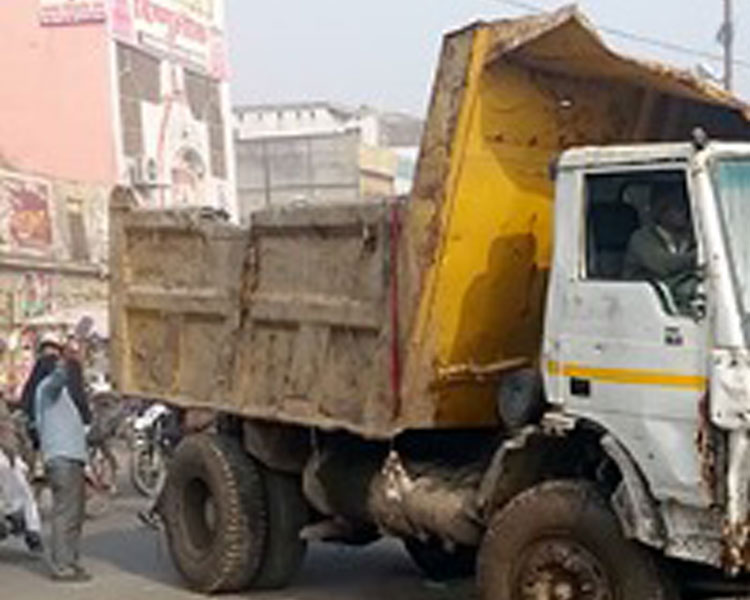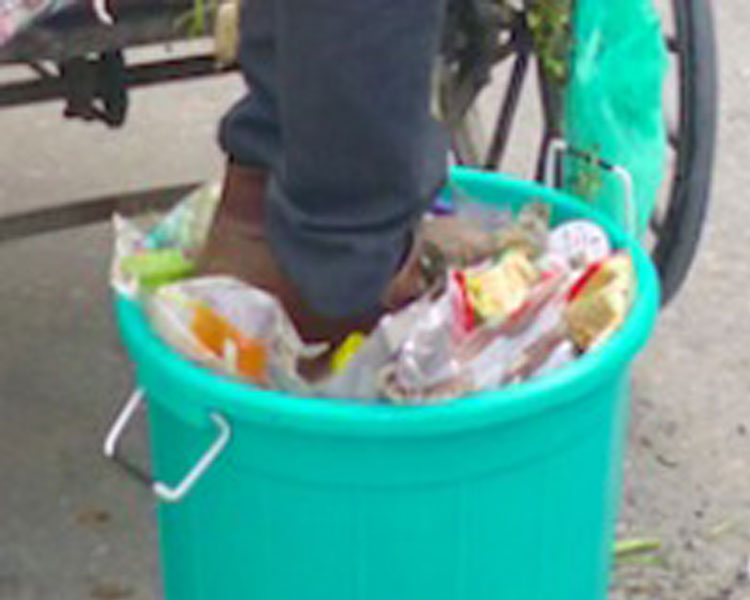
Over the past two weeks over seventy people from MIT and the Shri Ram Group of Colleges have been researching the waste management system in Muzaffarnagar, Uttar Pradesh. This group was made of MIT Tata Fellows, four students from the D-Lab: Waste class, and students and faculty from multiple schools at Shri Ram Group. While waste can encompass many aspects of waste, our focus was on understanding municipal solid waste – the waste produced by households and businesses.
We broke into five groups which covered:
- Household Waste Analysis and Interviews - which analyzed the waste generated by households and interviewed over 200 households throughout the greater Muzaffarnagar area to gain the household perspective about waste disposal
- Contribution of the Informal Sector – to document and quantify the contributions of Kabadiwalas (who buy recyclables) and ragpickers (who collect recyclables from dumpsites throughout the city)
- Bulk Generators of Waste – to understand how bulk generators of waste, like banquet halls, restaurants, and colleges, dispose of their waste.
- Compost Processing and Market – interviewed farmers and documented the current compost process to gauge the market potential for compost and opportunities to improve the current composting process.
- System Analysis and Overview – this group looked at all the actors in the system and helped to design a pilot program to be implemented over the next year.
My team focused on the household waste analysis to develop an estimate of the amount of waste generated per person and the types of waste generated by households. One of the key challenges in any municipal waste system is that often no one really knows how much waste is generated at the city level, nor how much each waste is produced by each category of waste producer (households, bulk generators, and small businesses). Most of us have little idea of how much waste we produce on a daily basis (including me!).
Efforts to estimate the per capita generation of waste, such as in this paper, are derived by estimating the total amount of waste collected in the city divided by the total city population. In Muzaffarnagar, where not all waste is collected, this method does very little to help clarify how much waste is produced.
At present, roughly 120 metric tons of waste is collected through the municipal system daily. The municipal system includes the privately contracted door-to-door collectors, municipal street sweepers and anyone else that disposes of their waste in the 45 secondary collection sites throughout the city.
To determine the total amount of waste generated by households, we collected waste from 15 – 30 households in three different areas of the city. We did this several times to be able to adequately balance out any off amounts of waste collected. We also collected the total number of family members in each household.
While collecting, I started to understand the waste system. The waste collectors would use a tricycle cart to collect from households. Each waste collector collected waste from around 200 households daily. They’d whistle to notify households to dispose of their waste. Some households would drop their waste from the roof, others from buckets tied to rope and lowered down four floors to the cart, and others by handing the waste collector a bucket.
After collecting and segregating the waste, we found that on average, at the household level, a single person in Muzaffarnagar makes 0.315 kilograms of waste on a day (this excludes, the amount of waste recycled through the door-to-door household recycling efforts). This means in a single day within the city limits with a population of more than 392,451 people, households alone produce more than 123.5 metric tons of waste each day. Given that 120 metrics tons of waste is collected every day, there is a minimum of 3.5 tons of waste not being collected on a daily basis. Of course, households are not the only waste generators in the city; thus, the 123.5 metric tons represent only a portion of the city’s daily waste.
Beyond understanding the amount of waste generated, the next question is what type of waste is generated. By knowing both of these variables, we can start to tweak the existing waste system to meet the demands of each stakeholder. Through segregating the waste, we found that roughly 60% of household waste is organic; this means that ~73.5 tons of waste produced daily is organic waste. Not all of this organic makes it to the municipal waste processing site as some of it is consumed by animals – the pigs, cows and dogs – at the secondary waste sites. One opportunity that part of our team is exploring further is the market size of compost. Muzaffarnagar is in a largely agricultural area of Uttar Pradesh; this could be a natural fit for reusing the valuable compostable material made by various waste generators throughout the city.
While is it is easy to speak about waste and the calculations to derive the mass amount of waste created, household waste is generated by humans. As you can imagine, everyone was surprised by the total amount of waste created. When we speak about this in a tangible sense, 123.5 metrics tons of waste is equal to more than 25 Indian elephants in weight. When you think about 25 Indian elephant-sized heaps of waste wandering around a city, it’s easier to imagine the capacity needed to manage this waste.
Our next step is to develop a pilot model that would aim to (a) collect more total waste, (b) encourage households to segregate waste at the household level, and (c) explore whether segregated waste contributes to a higher quality compost. By testing these questions at a small scale, we’d start to explore how to what types of changes are needed to encourage behavior change at the household level. Ideally, households and their workers would be disposing of their waste through approved disposal sites and methods.
We’d also start to see whether households are willing to segregate their waste without any incentive beyond merely providing the infrastructure necessary to collect segregated waste. This would be useful in determining whether it’s possible to get a regular supply of organic waste. Finally, we’d test how a clean supply of organic waste influences the market. Do farmers actually want to use compost? If not, are there other venues for organic waste?
Look for more posts from D-Lab: Waste students on this blog soon!




